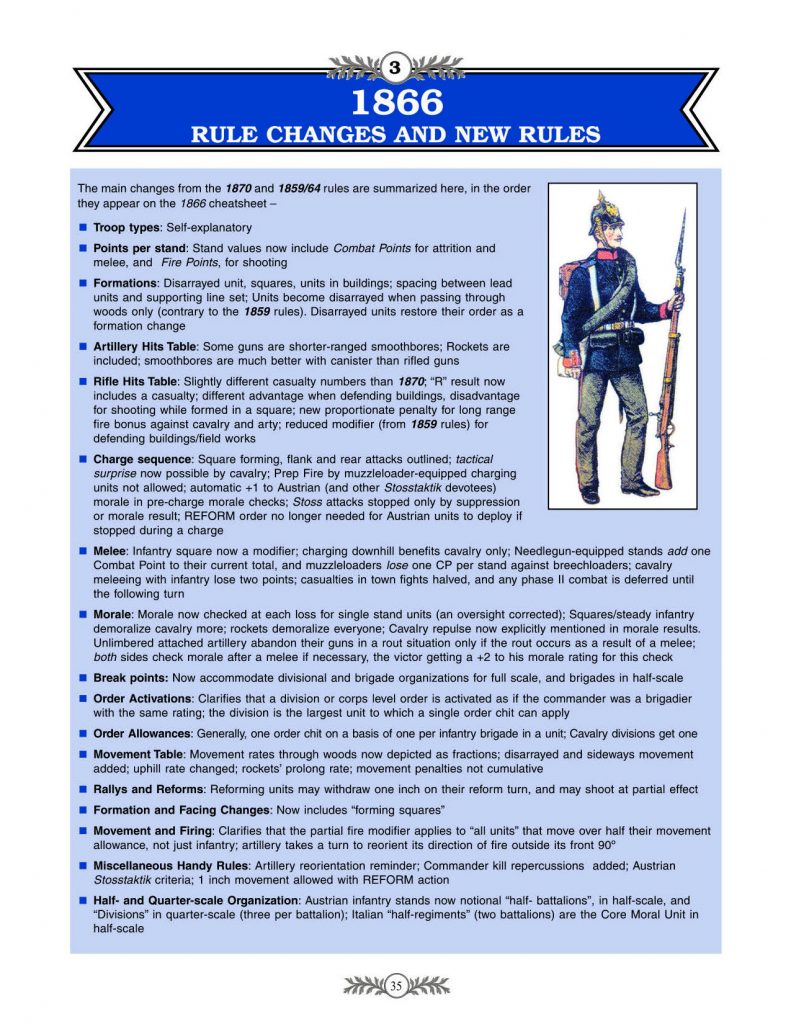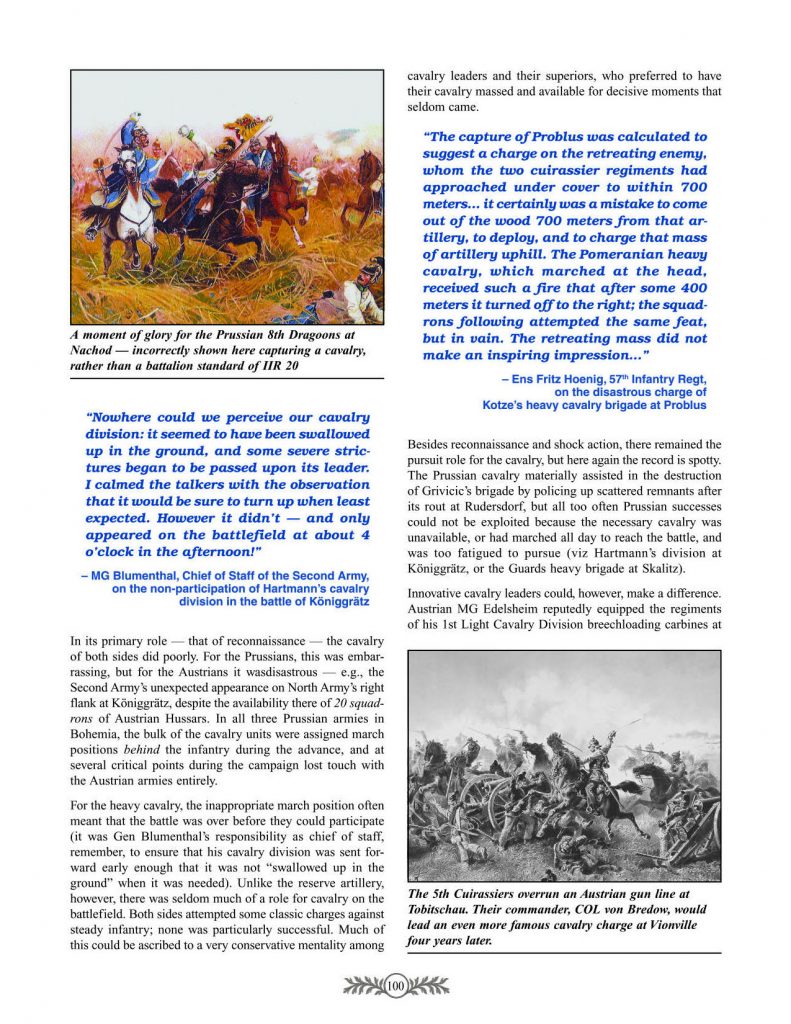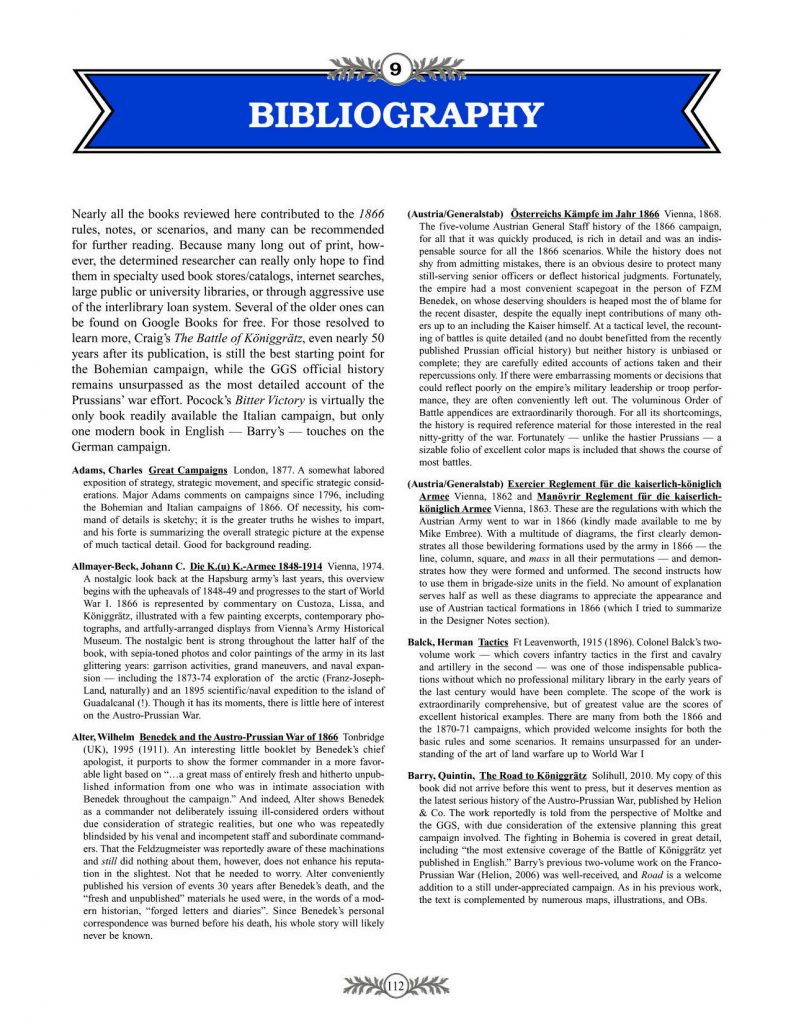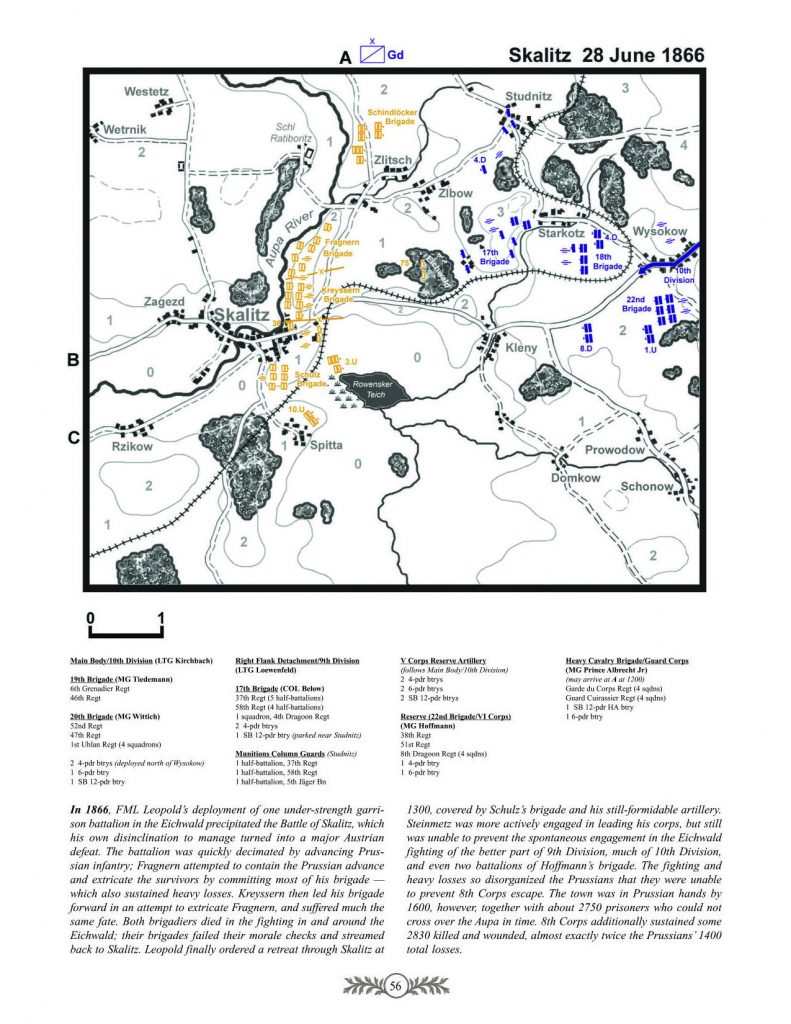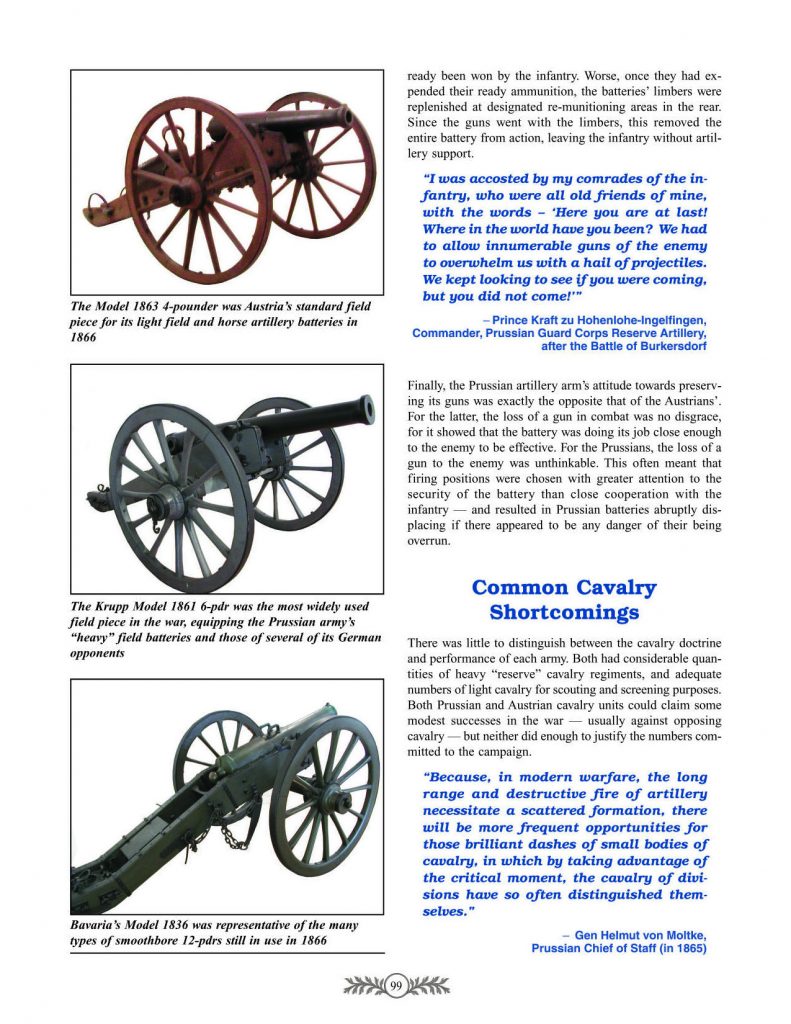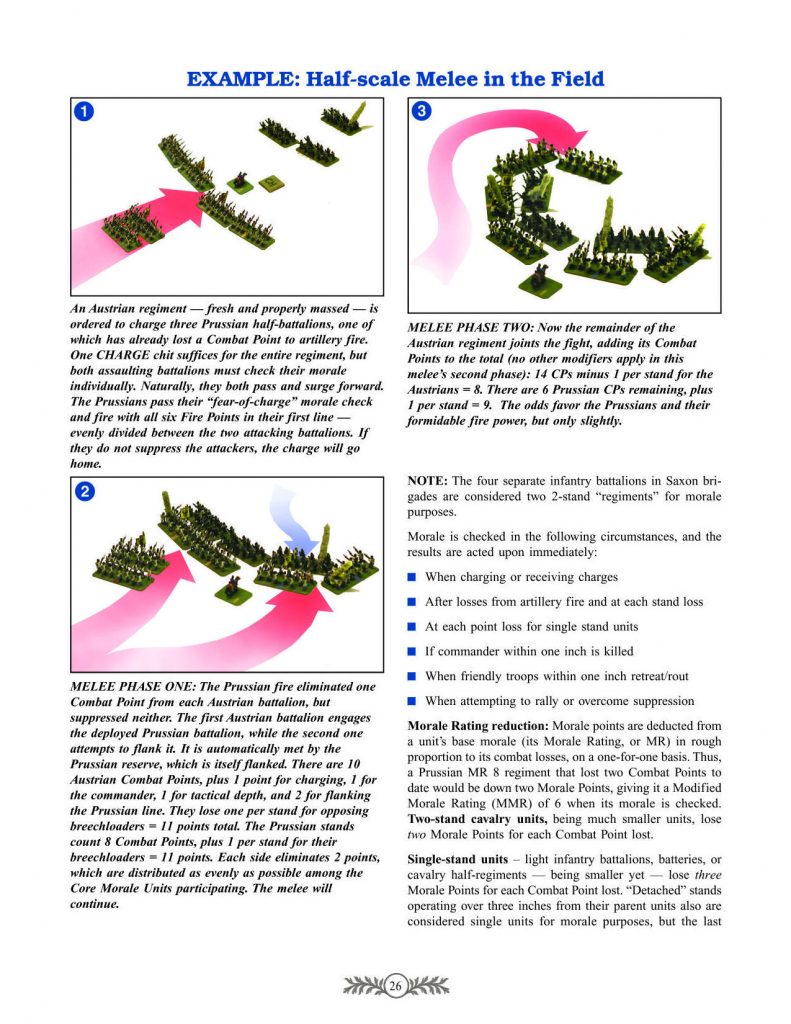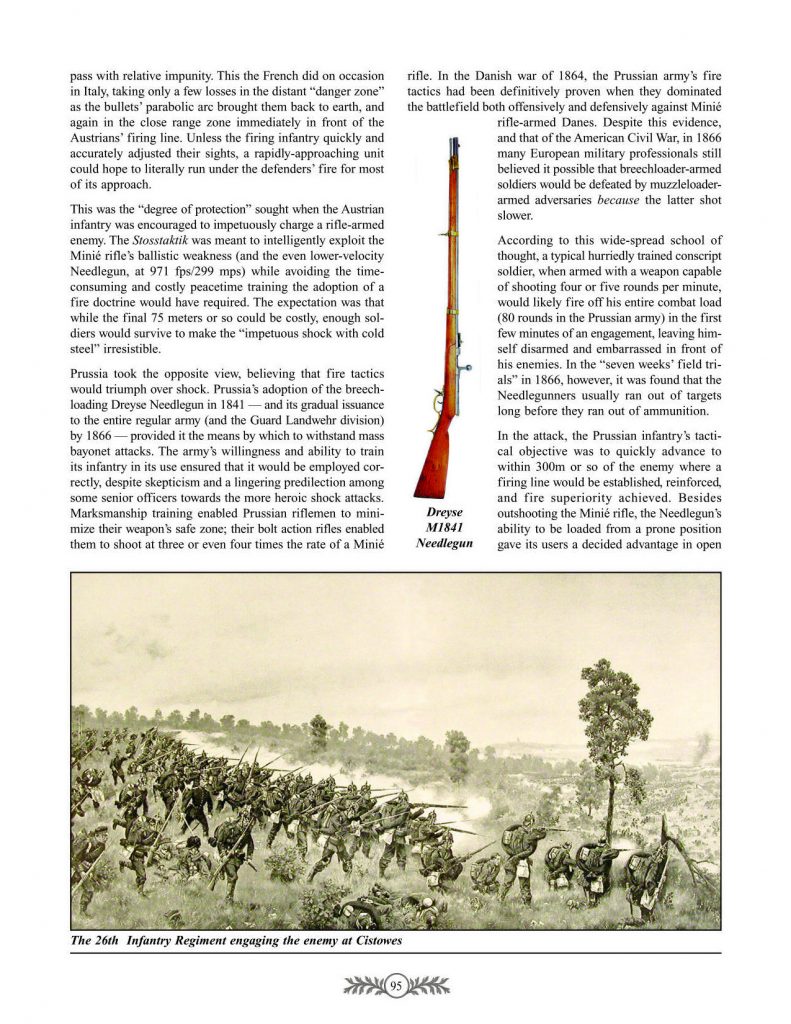
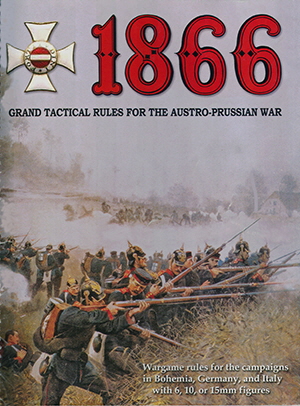 1866, published in 2010, is the last of the original Grand Tactical Rules trilogy for the mid-19th century wars of transition. It covers the Austro-Prussian War in Bohemia, the “German War” by Prussia and its allied contingents against Austria’s Federal German allies, and Italy’s third War of Independence against Austria in northern Italy.
1866, published in 2010, is the last of the original Grand Tactical Rules trilogy for the mid-19th century wars of transition. It covers the Austro-Prussian War in Bohemia, the “German War” by Prussia and its allied contingents against Austria’s Federal German allies, and Italy’s third War of Independence against Austria in northern Italy.
The basic Grand Tactical Rules were modified to accurately reflect each side’s strengths and weaknesses – Prussia’s formidable fire doctrine and Austria’s fervent adherence to shock combat – while giving each side the means to win within these historical parameters. The core rules, however – the command control, movement, fire, melee, and morale mechanics – are still as they were in the original 2001 vintage 1870 rules. If it worked, it hasn’t been touched. As with the other Grand Tactical Rules, there is an updated quick reference sheet (and rules summary) for the revised, quick-play 1866 rules here. This will enable much faster resolution of 1866 battles using the new 1871 fast play improvements.
In addition to the basic “grand tactical” scale, half and quarter-scale variants give 1866 gamers the option to play smaller battles, with just two or three divisions per side down to engagements involving just a few regiments.
- Designed for fast, accurate resolution of battles with minimal tables (3) and modifiers. Options have been kept to a minimum in the interests of completing a reasonably faithful recreation of a large battle in an afternoon.
- Includes three different scales, for large battles at the grand tactical level (several corps per side), and small-scale engagements down to regimental level.
- Streamlined turn sequence; simple, proven command and control system; straightforward combat resolution.
- Two 4-sided “Cheat Sheets” included, for two different scale games. Suitable for 6mm, 10mm, and 15mm basing systems; 1 inch= 100m; 1 turn = 30 minutes.
- Includes 14 historical battle scenarios (8 in Bohemia, 5 in Germany and 1 in Italy), each with several historical variants.
Extensive historical notes, military chronologies, and orders of battle. - Annotated Bibliography of over 90 entries.
- Compatible with the “1870” rules for the Franco-Prussian War, the 1859/1864 rules for the Franco-Austrian & Danish Wars, and the revised “fast play” 1871 rules, with a new quick reference sheet.

Austrian painter Fritz Neumann captured the final, successful Austrian assault on Italian-held Custoza at the culmination of the big 24 June battle – 18km, and seven years to the day after Austria’s debacle at Solferino (see the 1859 rules for details on that one).
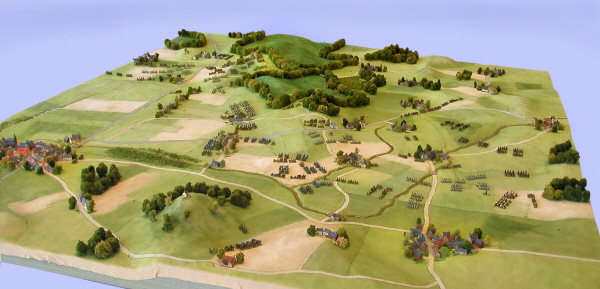
In this re-play of the Gitschin scenario, history is definitely not repeating itself. The Allied player is aggressively counter-attacking the lead elements of the Prussian 5th Division (center right) with all available forces: one Saxon and two Austrian brigades, plus cavalry and artillery. Another Saxon brigade is coming up to support what became a surprisingly successful attack.



